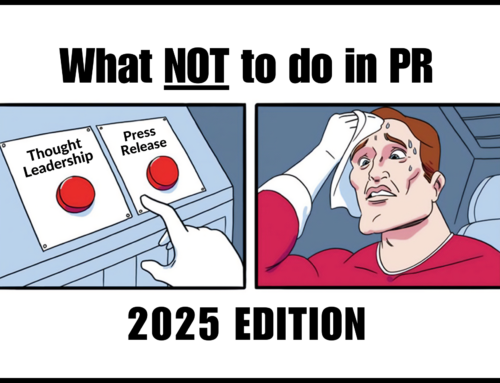
Over the years, anthonyBarnum has collected numerous case studies and outcomes on the most far-reaching and highest ROI PR strategies for B2B tech companies seeking to establish a category. Marketing executives want a big impact on their PR campaigns but also have limits on the resources they can invest in the external PR partner.
When looking at real outcomes in PR campaigns, there are highly successful tactics across the spectrum – high-investment assets for PR, and relatively low-investment assets for PR.
From the most intensive requirements to the least, here’s a look at what PR strategies in B2B tech have the most significant outcomes.
HIGHEST TO LOWEST EFFORT FOR HIGH-IMPACT PR
#1) Transactions – While the timing is not controllable by the marketer, funding, and acquisition will grab headlines throughout a technology company’s target media. Some transactions can easily rack up placements equaling hundreds of millions of unique views. The larger the funding, the more positioned the acquisition, and the bigger the outcomes.
While these announcements are important, they need to lay out a narrative of differentiation and market positioning to have a lasting impact. Transactional types of announcements can raise the profile of a company instantly, but to sustain that visibility, these campaigns need to transition quickly into market thought leadership.
On the scale of effort, transactional releases will rank very high for obvious reasons. First, the transaction has to be executed. On the communications front, they require an accompanying set of communications to manage the internal announcements and external facets. They tend to have steep requirements on the approval side as multiple stakeholders are often involved. Additionally, the roll-out to the media via embargos and exclusives can be a process. Our highest recommendation is to start as early as feasible to get these elements underway and maximize the outcomes.
#2) Data Release & Reports – Data announcements, coupled with short ePapers or summaries, can pack a punch. Our clients’ data releases often end up on the front pages of Tier 1 business media nationwide, if not worldwide. A strong data release can be transformational and rapidly build a company’s brand.
Getting there, though, is not easy. The challenge is that internal marketing teams, often in partnership with the PR team, must work with the data science and/or product team to dig up the data, position it, and contextualize it. The data narrative needs to be meaningful, original, and vetted. While a sound and compelling data argument in a release can deliver results, to maximize the outcome, it needs to be paired with a report and/or short ePaper to explain the meaning further. Newsworthy concepts can include data that expresses a trend, as well as data capturing the efficiencies driven by technology.
On the scale of effort, these come in under transactional releases but are far above other types of media visibility strategies. The internal investment in discerning data often proves to be very challenging within companies. Marketers often envision data reports with multiple layers and facets. While those types of reports can make an impact, we recommend starting smaller and more focused. Marketing teams typically need to work many months in advance of a planned execution date.
#3) Highly Innovative Thought Leadership – Thought leadership, where a company SME is positioned as an expert on an industry, process, or subject matter, delivers recurrent results in the media when executed astutely. Pairing original insights with either internal or external third-party data within a meaningful concept can deliver significant amounts of earned media results.
The trick to success is an understanding of the market and the way the media is reporting or exploring concepts within it. To build a set of high-impact thought leadership concepts, it’s important to compile and research current trends and coverage on related topics. It’s also important to look for credible third-party data—or to use internal data sources.
Data PR and thought leadership can cross-pollinate. If the company has data, but perhaps not enough or at a level that would warrant a full data release, it can be infused into a thought leadership pitch concept to the media. Additionally, if marketing takes on an extensive data report with a release, the data findings can be repositioned and recycled in alternative but complimentary thought leadership narratives.
On the scale of effort, innovative thought leadership is on the lower end. However, to be successful, the PR team needs to have a sophisticated understanding of how to put together these concepts in a way that will drive media interest. When done correctly, a single core concept can be adapted to trends and deliver dozens of stories over time.
Technology companies need a variety of tools in their arsenal to create brand awareness. These three are the most powerful for delivering results. For enduring visibility and high-concentrations of coverage, anthonyBarnum recommends starting with thought leadership and incorporating more and more complex strategies over time.





